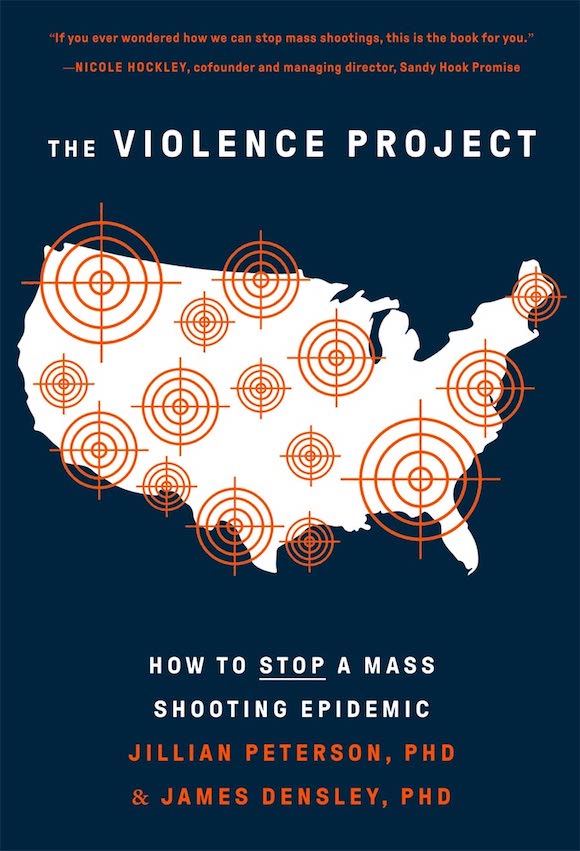
The Violence Project: How to Stop a Mass Shooting Epidemic
by Jillian Peterson, PhD and James Densley, PhD.
Publisher: Abrams Press, New York, 2021.
Hardback $15.48 on Amazon.
232 pages
Jill Petersen is a psychologist and James Densley is a Sociologist. Together they launched the Violence Project, which charts new pathways of prevention and ways to stop violence. They culled through police records and court filings, mined letters and diaries, examined news coverage, looked in social media databases and every corner of the internet, interviewed mental health providers, school counselors, and some of the families of victims of mass shootings. Peterson and Densley also interviewed several of the living perpetrators of mass shootings and people who knew them.
The book is a narrative of what they’ve learned about perpetrators, about the ways that people and places are ripped apart by gun violence. They were trying to find ways to understand the problem so that solutions might be found.
Because mass shootings leave such a trail of pain and horror and because they make previously safe spaces unsafe — schools, movie theatres, workplaces, houses of worship — it is easy to view each killer as an unchanging fixed point on a line — a monster. But Peterson and Densley say that may not help us find a way forward.
“If somebody is a monster, you can’t fix it. That means you just need more secure doors, and more guns, and more armed guards, because that’s how we protect ourselves from monsters. But, if you’re willing to say, this is a human being who has done a horrifically monstrous thing, let’s figure out the pathway that got them to that point, that’s when you can start having conversations about prevention,” Peterson said.
They wanted to understand the overlapping causes of mass shootings. Their research shows that 172 mass shootings have taken place in the United States over the last 55 years. More than 1,200 lives have been lost to mass gun violence, leaving scars throughout the nation.
The book is evidence based and data driven. They include BCE’s – Benevolent Childhood Experiences, which is a new instrument designed to assess positive early life experiences in adults that help mitigate the negative impact of ACE’s Adverse childhood experiences.
Benevolent Childhood Experiences (BCE’s)
Did you have at least one caregiver with whom you felt safe?
Did you have at least one good friend?
Did you have beliefs that gave you comfort?
Did you like school?
Did you have at least one teacher that cared about you?
Did you have good neighbors?
Was there an adult (not a parent/caregiver or the person from the first question) who could provide you with support or advice?
Did you have opportunities to have a good time?
Did you like yourself or feel comfortable with yourself?
Did you have a predictable home routine, such as regular meals and a regular bedtime?
I think a weakness of the book is there is no mention of God or spiritual teaching. It seems this might be the place to start. When they interviewed the Perpetrators, I don’t believe they ever asked them if they had any kind of spiritual teaching or spiritual life. The answer to this question might be most revealing.
